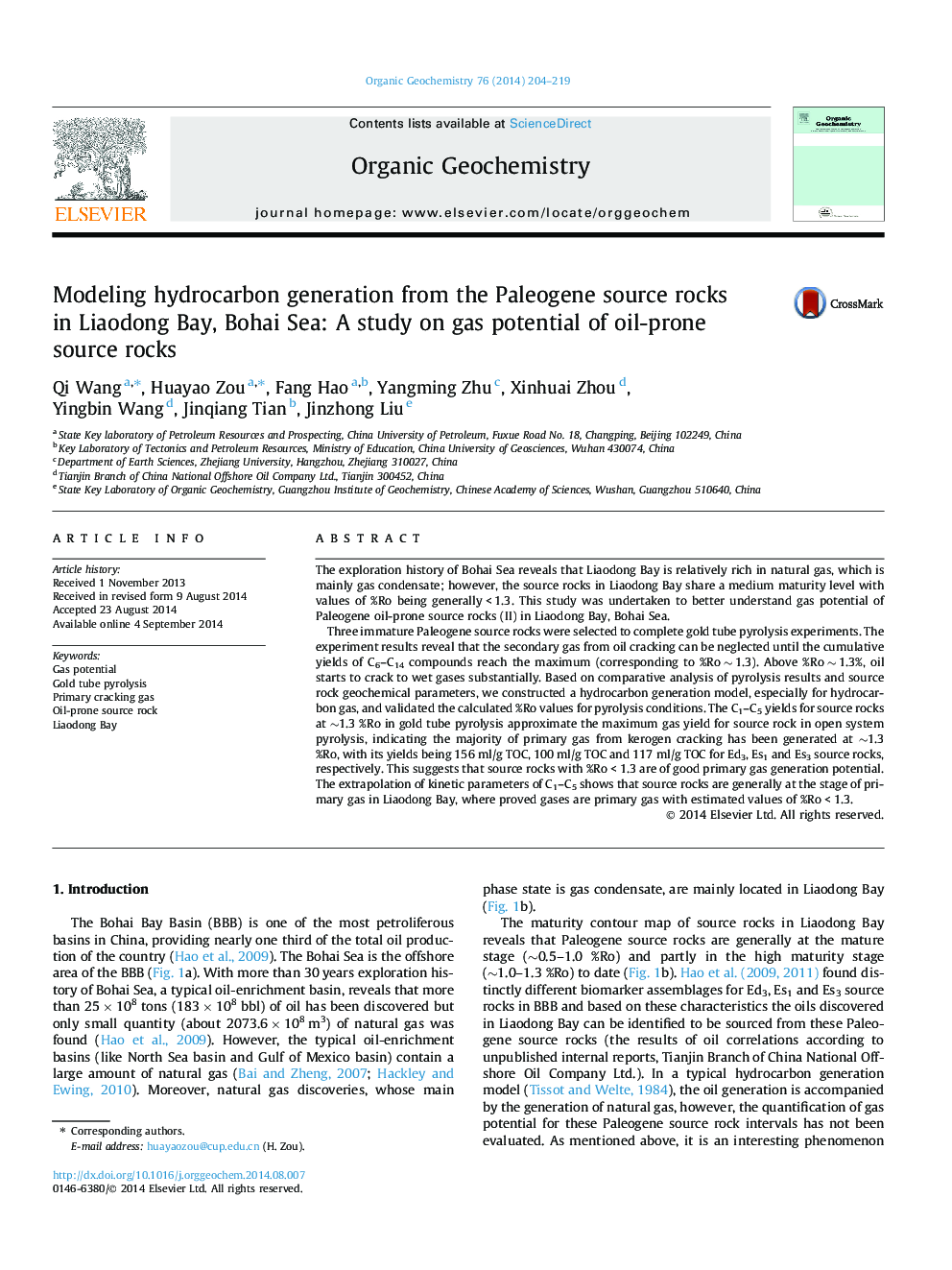| Article ID | Journal | Published Year | Pages | File Type |
|---|---|---|---|---|
| 5162253 | Organic Geochemistry | 2014 | 16 Pages |
Abstract
Three immature Paleogene source rocks were selected to complete gold tube pyrolysis experiments. The experiment results reveal that the secondary gas from oil cracking can be neglected until the cumulative yields of C6-C14 compounds reach the maximum (corresponding to %Ro â¼Â 1.3). Above %Ro â¼Â 1.3%, oil starts to crack to wet gases substantially. Based on comparative analysis of pyrolysis results and source rock geochemical parameters, we constructed a hydrocarbon generation model, especially for hydrocarbon gas, and validated the calculated %Ro values for pyrolysis conditions. The C1-C5 yields for source rocks at â¼1.3 %Ro in gold tube pyrolysis approximate the maximum gas yield for source rock in open system pyrolysis, indicating the majority of primary gas from kerogen cracking has been generated at â¼1.3 %Ro, with its yields being 156 ml/g TOC, 100 ml/g TOC and 117 ml/g TOC for Ed3, Es1 and Es3 source rocks, respectively. This suggests that source rocks with %Ro < 1.3 are of good primary gas generation potential. The extrapolation of kinetic parameters of C1-C5 shows that source rocks are generally at the stage of primary gas in Liaodong Bay, where proved gases are primary gas with estimated values of %Ro < 1.3.
Keywords
Related Topics
Physical Sciences and Engineering
Chemistry
Organic Chemistry
Authors
Qi Wang, Huayao Zou, Fang Hao, Yangming Zhu, Xinhuai Zhou, Yingbin Wang, Jinqiang Tian, Jinzhong Liu,
